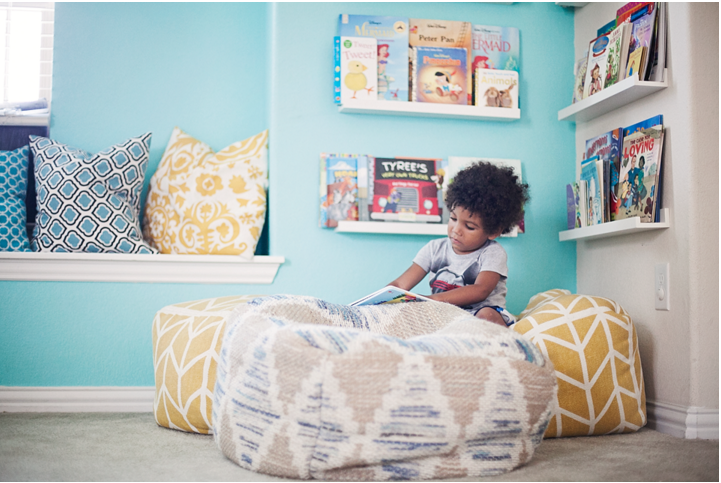
Learning to Read: 5 Ways to Spike Your Child’s Interest in Reading
6 years ago 0 Comments 10.6k Views
Teaching your child to read is a long and involved process and one that won’t yield results overnight. Every child learns to read at her own pace, and with her own setbacks and successes. Here are five ways to foster a love of books and reading in your child that will last a lifetime.
Read to Your Child
How to teach your child to read begins with this one simple piece of advice: read to your child. When it comes to teaching your child to read, nothing is more important.
You can start reading to your child from birth. Read while you’re cuddling. Read before naps and bedtime. Read while you’re waiting for appointments. You’re not trying to teach the child to sound out letters or identify words at this young age. Instead, you’re helping her associate books with fun times and your comforting presence. Buy her sturdy board books like Hello World or My Farm Friend and let her explore them. She’ll learn how to turn pages and will love hearing her own name as part of the story.
Take Advantage of Environmental Print
Learning the letters of the alphabet is the first technical step towards reading. Most children start by learning to identify the first letter of their name. If Mike knows his name begins with an M, watch for the letter M in the world around him and point it out to him. We’re surrounded by “environmental print” on road signs, billboards, television, and newspapers. Take advantage of it to offer real-life examples of letter use.
Incorporating your child’s own name into reading materials can also be an effective learning method. For example, the My Very Own Name book allows your child to recognize his or her name within the story.
Introduce one letter at a time, using environmental print to reinforce your child’s ability to recognize each letter’s shape and sound. Once they master letters, you can start to introduce blended letter sounds like “ch” and “th.”
Make Reading an Active Activity
We tend to think of reading as a passive activity, but it’s actually active. A good reader is handling the book, scanning the page, and imagining events all at once. You can cultivate this skill by making reading as active as possible. Sing the lullabies on the page. Make up funny voices. Point to illustrations and talk about them.
As your child gets older, start asking questions about the book. With younger children, this might be as simple as asking them to find the cat in an illustration or to point to the blue ball. As kids get older, you can start asking more complex questions. Can you guess what happens next? Have you ever felt like the character in the book? Why is that old giant being so mean?
How does this help when teaching your child to read? When you talk about books, you’re helping children grow their vocabulary, but equally important is that they’re developing their ability to comprehend stories. Focusing only on the technical side of reading may help a child sound out words, but that doesn’t do them much good if they don’t understand what’s written.
Provide a Good Example
Kids have an uncanny ability to determine what their parents view as important, and act accordingly. They won’t learn to appreciate and value books if they don’t see you enjoy reading as well. Spend time reading, whether it’s a magazine, a favorite book, or a local newspaper. Make it clear reading is something you enjoy and your children will want to mirror your behavior.
Rhyming words
Build on your child’s growing ability to identify words with word families—words that rhyme. Once your child can read the word, dad, for instance, it’s relatively easy to teach rhyming words like sad, bad, had, and mad.
When teaching a child to read, remember to be patient. Focusing on a love of books and reading together is more important than his ability to recognize words or sound out phonetics, at least in his early years. The more he associates books with fun, the more he’ll want to learn—and that motivation will grow into a lifelong love of reading.




